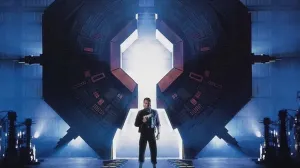With a director, production start date, and working title all in place it seems like Fox is going full steam ahead with it’s new X-Men television pilot.
Videos by ComicBook.com
Details are still few as far as the pilot’s plot and cast go. What we do know is that the series will focus on a family made up of two human parents and their mutant child. In order to avoid the anti-mutant government, the family is forced to go on the run, where they encounter and underground mutant resistance network.
Fox hasn’t yet named any specific mutants who will be appearing, though creator Matt Nix and pilot director Bryan Singer have both hinted that there will be some “familiar faces” involved.
However, producer Lauren Shuler Donner did confirm that Sentinels will be featured in the series, which fits in nicely with the oppressive, anti-mutant government.
With that in mind, here are some Sentinel stories from X-Men history that could serve as solid inspiration for the new X-Men series.
Days Of Future Past
This is the obvious one, but Chris Claremont and John Byrne’s classic two-parter “Days of Future Past” has already inspired one successful X-Men movie, and it would be sound source material for the team behind the X-Men television series.
“Days of Future Past” is a story that mixes superhero action, time travel, and a dystopian setting. In the future, Sentinels patrol mutant internment camps. A small resistance movement that includes Storm, Colossus, Magneto and Wolverine are doing everything they can to survive. In a last ditch effort, they use the powers of Rachel Summers, the daughter of Jean Grey and Cyclops, to send Kitty Pryde’s consciousness back in time to her younger physical body in the hopes that they can prevent their terrible future from coming into being in the first place.
The television series could take place in a world that is on the path towards the future of “Days of Future Path,” but not quite there yet.

The Shaw Sentinels/Project Wideawake
For much of the X-Men stories that were published in the 1980s, Sebastian Shaw, the Black King of the Hellfire Club’s Inner Circle, owned and produced the Sentinels. For Shaw, the idea was that, if Sentinels must exist, then he should control the Sentinels and profit from them.
Behind the scenes, this was part of one of Chris Claremont’s long-term story plans that never quite came to fruition, in which the Hellfire Club was being set up as a major force in the “Mutant Wars” event that was never published. He had also hinted in other stories that the Hellfire Club was instrumental in creating the dystopian future seen in “Days of Future Past.”
Eventually, Shaw sold the rights to the Sentinels to the United States government, which began Project Wideawake under the supervision of Val Cooper and Henry Gyrich. What started as an anti-mutant operation eventually changed its goal to one that hoped to convince or coerce mutants to work for the government. Project Wideawake was responsible for introducing Forge into the X-Men cast, turning the Brotherhood of Evil Mutants into Freedom Force, and rebooting X-Factor as a government sponsored mutant superhero team.
Project Wideawake has tons of story potential to inspire the X-Men television series, and the connection to Sebastian Shaw may explain why industry trades still have the series listed under the title Hellfire.

Operation Zero Tolerance
The 1997 X-Men crossover event “Operation: Zero Tolerance” introduced a brand new kind of Sentinel.
Rather than building robot Sentinels, the villain called Bastion used technology acquired from the “Days of Future Past” timeline to turn ordinary humans into cyborg Prime Sentinels.
This could put an interesting spin on Sentinels for the X-Men television series. By giving the Sentinels a human form, they can avoid breaking the bank on special effects, make their villains more personable, and play on the paranoia of viewers by making them wonder i their favorite characters are secretly Sentinels.
Bastion himself was revealed to be a merged version of Master Mold, the Sentinel leader, and Nimrod, an incredibly advanced and deadly Sentinel from the future. In other words, great big bad material.

E Is For Extinction
When Grant Morrison took over the X-Men franchise in the early 2000s, he took many of the established X-Men institutions and either turned them on their head or tore them down.
In his opening arc, “E for Extinction,” Morrison tore down the mutant nation of Genosha until it was nothing but ash and rubble.
The horrific deed was down by Wild Sentinels. These Sentinels were part of a secret project developed in South America that advanced Sentinels to the point that they could self-adapt, rebuilding themselves out of technology found outside of a factory or laboratory.
If nothing else, the concept of Wild Sentinels created some of the most visually distinct versions of the Sentinels to date, which should help inspire the visuals of the new X-Men television series, if nothing else.

Sentinel Squad ONE
Following the events of M-Day, in which most mutants on Earth lost their powers, the Office of National Emergency (O*N*E) deployed a new squad of Sentinels to monitor the remaining mutants at the Xavier School for Gifted Youngsters.
These Sentinels were unique in that they were not automated robots, but mechs operated by human pilots. This created the opportunity for some human drama in a story about giant robots, which may be a nice model for the X-Men television series to follow.
In addition, much of the tension in this era was caused by the expressed mission of the O*N*E. While they were officially there to monitor and protect the remaining mutants, the Sentinels were still seen as a symbol of anti-mutant bigotry by many of the mutant M-Day survivors and Xavier’s mansion felt more like a prison than a sanctuary to some mutants.









